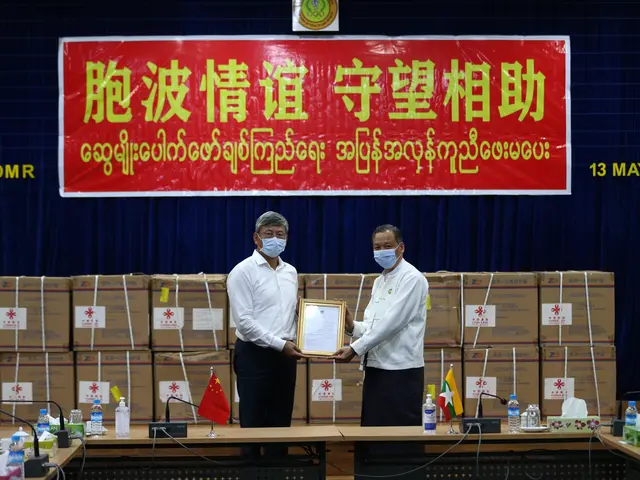Since the COVID-19 outbreak, the Chinese and the Myanmar peoples have rushed to aid each other, the latest testament to the resilience of their millennia-old Paukphaw fraternity.
As the two neighbors mark the 70th anniversary of their diplomatic ties on Monday, China and Myanmar are holding in their hands a fresh opportunity to inject new impetus into their endeavor to build a community with a shared future that can better benefit their people in the years to come.
Friendly exchanges between China and Myanmar can be traced back to ancient China's Han Dynasty around 2,000 years ago. And their exchanges have grown increasingly dynamic over the centuries. People in both countries widely use "Paukphaw," a Myanmar term meaning "fraternal," to describe their brotherly bonds.
In 1950, Myanmar was the first of countries with a different social system to recognize the People's Republic of China. Since then, the two sides have been working together to ensure a stable and constant development of bilateral ties, and to tap the potential of their huge economic complementarity.
Myanmar has also been one of the first countries to respond to the China-proposed Belt and Road Initiative, for which the China-Myanmar Economic Corridor (CMEC) holds great importance.
Over the years, China has been a major source of investment for Myanmar, notably in the areas of electricity, telecommunications and infrastructure.
The China-Myanmar joint venture Thaketa gas-fired combined cycle power plant is a good example of their win-win economic cooperation along the CMEC. Inaugurated in 2018 with a capacity of 106 megawatts, the plant has largely made up for the electricity shortage in the Yangon region.
According to Chinese Ambassador to Myanmar Chen Hai, Chinese investment in Myanmar's textile industry has created 400,000 jobs for local residents.
China is Myanmar's largest trading partner, accounting for 35 percent of the latter's total import and export volume. China's official data shows trade between the two sides has seen a year-on-year growth of over 10 percent each year in the past three years. Particularly, in 2019, China's trade with Myanmar expanded by 28.5 percent year-on-year to about 17.71 billion U.S. dollars, about four times larger than that of 2010.
Earlier this year, Chinese President Xi Jinping paid a state visit to Myanmar. During Xi's visit, the two sides agreed to build a China-Myanmar community with a shared future, which ushered in a new era of bilateral relations.
The ongoing pandemic fight has proved that the idea of building that community with a shared future is not only necessary but also wise.
When China was in the depths of its own epidemic fight, the Myanmar government and the whole Myanmar society offered strong support and donated urgently needed supplies to China. Later, during Myanmar's fight against the coronavirus, the Chinese side has also donated multiple batches of anti-epidemic supplies to Myanmar, sent three groups of medical experts, and helped build a nucleic testing lab in the country.
While working together to contain the outbreak, the two sides have also made positive progress in jointly facilitating cross-border trade and the resumption of production.
In a phone call with his Myanmar counterpart U Win Myint last month, Xi said the COVID-19 outbreak in Myanmar is pulling at the heartstrings of the Chinese people, and China will continue to provide firm support and as much assistance as possible in line with Myanmar's needs.
As the world is going through some fundamental changes rarely seen in a century, countries around the world are faced with new global challenges.
In this age of monumental transformations, the two countries share the need to continue upholding the spirit of five principles of peaceful coexistence -- a now widely-recognized international diplomatic guideline they helped initiate -- and safeguard their sovereignty, security, and development interests.
China and Myanmar have an exchange history of more than 2,000 years and share a land border over 2,000 km long. With mutual trust, mutual respect and mutual support, the two Paukphaw partners can continue benefiting each other while contributing to peace and prosperity of the region and beyond.
 简体中文
简体中文

